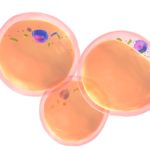By David Blyweiss, M.D., Advanced Natural Wellness
March 25, 2022
Weight loss is a big industry these days. You’ve got Nutrisystem, Jennie Craig, Weight Watchers, GOLO and so many more programs to help you.
The nice thing about most of these weight loss strategies is that they are structured. They have “rules” that are easy to follow. And there is something to be said for all of them, especially when you increase your activity levels at the same time.
Considering that nearly 75% of Americans are overweight or obese, it’s easy to understand the popularity of these programs.
Some of them are based on lowering your glycemic load to improve metabolism. Others zero in on calories in, calories out. In theory, most of them should work to help you drop pounds.
But there is a growing problem here in the U.S. that weight loss programs don’t account for. And it may be sabotaging your weight loss goals – no matter how strictly you “follow the rules.”
You see, modern day chemicals have changed the way our bodies use and store fat. They change our metabolism and interfere with our hunger signals. We call them “obesogens.” And they work in mysteries ways.
MD Exposes the Hidden Danger to Your Eyes

When your eyesight starts to fail, it's a real problem. Suddenly you can't go to the grocery store... you can't get to the doctor if you have an emergency... you can't meet your friends for dinner…
Your "regular" doctor doesn't have time to keep up with the latest research. And the same goes for eye doctors. They go to school to learn how to fit you for glasses and contacts, but have no way of preventing the damage and loss of eyesight that threatens your freedom and independence.
Let me show you something that explains a LOT about how your eyes work.
In my FREE Special Report, I'll show you a HUGE, untapped resource for your eyes that safely and naturally restores clear, effortless eyesight.
Click here to get started...
When your body comes into contact with them…
- Fat cells grow bigger and stimulate the production of more fat cells. The more of these cells that build up in your body, the more weight you gain.
- Calories get stored as fat and are unable to be released as energy.
- Hunger signals go haywire, making it difficult to moderate food intake.
- Health problems like type 2 diabetes, fatty liver and metabolic syndrome soon follow.
In other words, you can diet and exercise all you want. But if you have an accumulation of these fattening chemicals in your body, you still might not be able to lose weight.
Obesogens in Your Food Supply
It’s a sad fact, but some of the foods you eat may contain obesity causing chemicals. That’s because, even when we eat foods that seems like they should be “natural,” commercial farming and ranching practices are rife with the use of chemicals.
Conventional fruits and vegetables are loaded with toxic herbicides, pesticides and environmental pollutants that bind to your fat cells.
Tip: Use the Environmental Working Group’s “Dirty Dozen” list to check out which ones are laced with the most chemicals. All items on this list should always be bought organic.
Farm-raised fish can contain all sorts of chemicals. The most common are polychlorinated biphenyls, which have a direct link to obesity and diabetes. Farm-raised salmon is, by far, the worst. Avoid it at all costs.
Tip: Stick with smaller species of wild-caught fish like Pacific halibut, mackerel, Alaskan salmon, sardines, herring, rainbow trout and flounder.
Commercial livestock for meat purposes is exposed to a wide variety of toxins from their food supply. As in humans, these toxic compounds tend to collect in the fatty areas of the animal.
Are You Suffering From...
- Love handles and a pot belly
- Romance that isn't what it used to
- Forgetfulness and inattention
- Low (or no) strength and endurance
- A sex drive that's shifted into neutral...or worse
If so...you may have Mature Male Burnout. Click here to discover more about this unique condition and what you can do about it.
Tip: Always select lean cuts of meat and poultry from grass-fed/pasture-raised animals.
Artificial sweeteners, such as saccharin and aspartame don’t help you lose weight. Quite the contrary. It turns out they are actually obesogens! They disrupt your metabolism, boost the number and size of fat cells and increase appetite.
Tip: Stevia is a safe, calorie-free sweetener that doesn’t carry any of the weight gain or metabolic risks associated with artificial sweeteners or refined sugar.
Obesogens in Your Home
The worst thing about obesogens is that they are ubiquitous. They are everywhere, especially in your home. In fact, many products you use every single day are blocking your ability to lose weight, and maybe even adding to weight gain.
Plastics often contain a chemical called. Bisphenol A (BPA). It is also found in the linings of most food cans. You’re even exposed to it when you handle grocery store receipts.
Tip: Switch to glass or stainless-steel storage containers. Try to avoid buying foods that come in plastic, and stick to canned goods that are packaged in BPA-free lined cans, or an equivalent product that comes in a jar.
Personal hygiene products, like lotions, soaps, shaving cream, deodorants, sunscreens, shampoos and other personal care items can contain phthalates and parabens. They are also found in laundry soap and air fresheners. You can even find phthalates in your shower curtain, vinyl flooring and carpeting.
Tip: Read labels carefully. On labels, phthalates are often hidden under the guise of “parfum” or “fragrance”. So avoid highly scented products. This includes air fresheners, scented candles and plug-ins. If you see any word on the label ending in “paraben”– like methylparaben or ethylparaben – put it back on the shelf.
Clothing and home furnishings are often treated with chemicals that act as stain repellants, water repellants and flame retardants. These chemicals come out of home furnishings in the form of dust, so you end up breathing them in.
Tip: Avoid flame-retardant or water-resistant clothing. Although many flame retardant chemicals use in furniture have been phased out in the U.S., if your upholstered furniture was manufactured before 2015 it likely contains them and you may want to consider replacing these pieces. It is also a good idea to remove or minimize carpet.
In the meantime, vacuuming, sweeping, mopping and dusting regularly can cut down on chemicals released from furniture, carpet and draperies.
SOURCES:
Obesity and Overweight. Centers for Disease Control and Prevention. National Center for Health Statistics. Page last reviewed: Sept 2021.
Heindel JJ, Blumberg B. Environmental Obesogens: Mechanisms and Controversies. Annu Rev Pharmacol Toxicol. 2019;59:89-106.
Holtcamp W. Obesogens: an environmental link to obesity. Environ Health Perspect. 2012;120(2):a62-a68.
Heindel JJ. History of the Obesogen Field: Looking Back to Look Forward. Frontiers in Endocrinology. 2019;10.
European Society of Endocrinology. Minimizing exposure to common hormone-disrupting chemicals may reduce obesity rates. ScienceDaily. May 2018.
Rodgers KM, Bennett D, Moran R, Knox K, Stoiber T, Gill R, et al. Do flame retardant concentrations change in dust after older upholstered furniture is replaced? Environment International. 2021;153.







